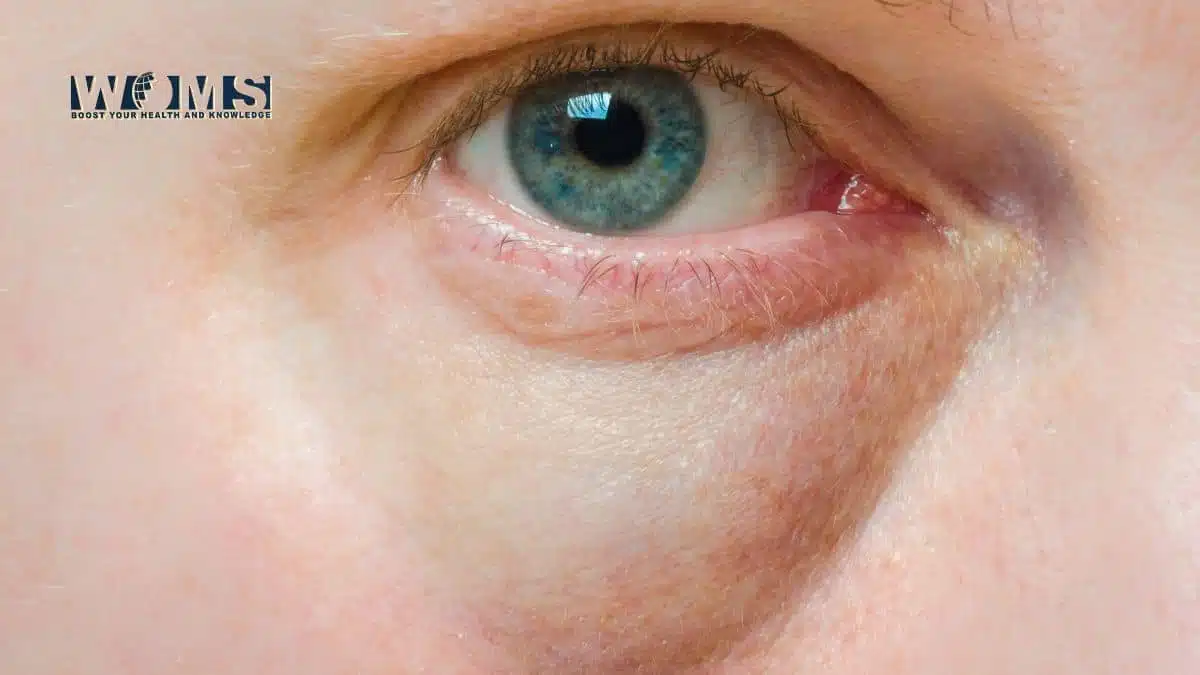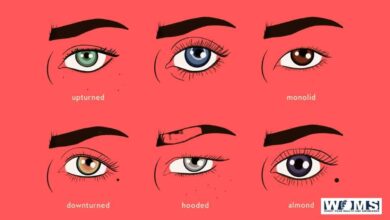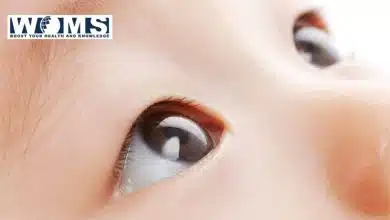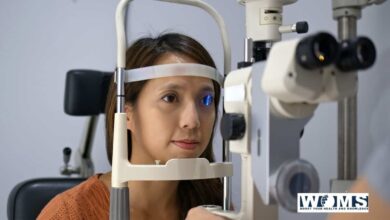Swollen Tear Duct: Causes, Symptoms, & Treatment

Tear ducts are the main ducts associated with the eyes to drain tears into small tubes known as nasolacrimal ducts. These tubes extend from the eye to the nose. These tear ducts may get infected due to multiple reasons. Infection of these ducts appears as blocked or swollen tear ducts. Blocked or swollen tear ducts are unable to drain tears normally. These blocked tear ducts aggravate swelling and further increases the chances of secondary infection.
This article explains all possible causes of the swollen tear duct, their proper diagnostic measures, and management protocol to deal with them accordingly. Let us take a deep dive into the main details associated with swollen tear ducts.
Normal physiology of tear duct
Tears are usually formed in the lacrimal glands, glands associated with the eyes. These tears stay on the outer surface and across the surface of each eye. These tears drain through the holes (puncta) into the canals. From here, these tears move towards the lacrimal sac present on the side of the nose. From the lacrimal sac, these tears empty into the tear duct that transfers them into the nose.
It is a small but complex drainage system of tears. This drainage system may get blocked at any point, usually, the tear duct, appearing as a swollen tear duct. This blockage prevents the tear from coming out of the eyes. In this way, the eyes remain swollen and also become a source of infection.
What are the common causes of a swollen tear duct?
A swollen tear duct is associated with a bundle of different causes. Every cause has a different etiology and concerning agents to differentiate. Let us have a look at the common causes associated with a swollen tear duct.
Infection of the tear duct
Infected tear duct or dacryocystitis is one of the common causes associated with a swollen tear duct, redness, excessive tearing, and yellow discharge. This type of infection is usually not related to a cold, allergic response, or other underlying condition. Moreover, it can be due to the natural growth pattern of the bones surrounding the nose and eye. It is usually because of the abnormal growth of the face and skull, leading to narrow tear ducts.
These narrow tear ducts are more prone to bacterial growth and different infections. If left untreated, these types of infections can spread to the eyelids.
Blocked tear duct
Blocked tear ducts are also one of the reasons for a swollen tear duct. This condition arises due to a complete or partial blockage of the tear drainage system. Besides swollen tear ducts, there are also multiple associated symptoms. These are as follows:
- Excessive tearing
- Redness in the white region of the eye
- Recurrent infections of the eye leading to inflammation or pink eye
- Painful swelling near the inner corner of the eye
- Pus discharge
- Blurred vision
Causes
There are multiple causes associated with a blocked or swollen tear duct. These are as follows:
- Chronic nose infection – recurrent nasal infections like chronic sinusitis can partially or completely block the tear duct, resulting in the swelling of the tear duct.
- Abnormal growth of skull and face – people suffering from syndromes can also exhibit distorted facial growth. Such peoples with facial bony growth abnormalities as in Down’s syndrome also have a greater tendency for blocked or swollen tear ducts.
- Age-associated changes – as people grow older, multiple changes happen in the eye structures. These changes include the narrowing of the punctal opening and miniature openings in the inner eyelid. These changes also have the capacity to block the tear duct and ultimately appear as a swollen tear duct.
- Nasal injury – nasal injuries like a broken nose or scar formation can also block the tear duct and appear as a swollen tear duct.
- Conjunctivitis – it is the inflammation of the conjunctiva which is a mucous membrane covering the inner surface and front aspect of the eyelid. This condition can also cause a problem just as a swollen tear duct.
- Nasal polyps – nasal polyps are the outer growths from the inner lining of the nose. These polyps can obstruct the nasolacrimal ducts and ultimately tear ducts.
- Malignant growths – these neoplastic growths can also affect the tear duct, imposing pressure on the tear duct. In this way, it can obstruct the tear duct, leading to swelling of the tear duct.
A study suggests that about 20% of newborns exhibit blocked tear ducts. In such cases, this condition heals itself within 4 to 6 months.
Other common causes
There are also some other common causes that can affect the tear duct. Radiotherapy of the face or head can also cause blockage and swelling of the tear duct. In addition, chemotherapy also has common effects on tear ducts including the swollen tear duct. Moreover, using radioactive iodine to check thyroid status can also cause swelling of the tear duct. Besides these, using excessive eye drops for eye problems like glaucoma can also block the tear duct.
What are the other common symptoms associated with a swollen tear duct?
A swollen tear duct also exhibits a variety of symptoms. Tear ducts being a part of the tear drainage system helps to drain tears from the eye to the nose. When tear ducts are blocked or swollen, the tears are unable to drain in a normal way. Because of this, the eyes remain watery and a source of infection. There are several other symptoms associated with a swollen tear duct. These are as follows:
- Redness of the inner corner and eyelid of the eye
- Inflammation in the eye
- Increased tearing from the eye
- Yellow or pus discharge from the eye
- Fever due to infection
During this condition, the tears may be thicker than the normal watery consistency. Moreover, the eyes may seem dry and crusty due to increased discharge from the eye. These symptoms may become more severe due to sinus or cold-type infections.
How can we diagnose a swollen tear duct?
An ophthalmologist or your physician may diagnose a swollen tear depending on different physical and diagnostic tests. Your healthcare provider may question you about your complete medical history. In addition, a proper examination of the eyes and surrounding area may confirm a swollen tear duct. There are some diagnostic tests to confirm the diagnosis of the swollen tear duct. These are as follows:
Tear drainage test
This test measures the quantitative count of the tears draining from your eyes. A special dye is used to place on the inner surface of the eye. If the dye drop still remains on the surface of the eye for more than five minutes, it indicates a swollen or blocked tear duct.
Eye imaging techniques
In this imaging technique, a contrast dye is used to pass from the corner of your eyelid through the tear drainage system. Then your ophthalmologist may use magnetic resonance imaging to computed tomography scan to diagnose the infected region of the tear duct.
Irrigation and probing
In this method, saline is used to flush the tear drainage system to check how the drainage system is going on. In addition, a probe is placed into the tint drainage holes present at the corners of your eyelid to check for any blockage.
When there is a need to visit an ophthalmologist regarding a swollen tear duct?
Symptoms of a swollen tear duct may vary from mild to moderate and severe. So it is better to know about the severe symptoms of a swollen tear duct. When the symptoms get intense, it is the best option to visit your nearby ophthalmologist as soon as possible. These are the symptoms that shouldn’t be ignored.
- Too many watery eyes, affect your daily life activities
- Excessive tearing from the eye with some yellowish or pus discharge
- Recurrent eye infections
- Constant irritation in your eyes
- Blood traces becoming visible in the tears
- Fever indicating an eye infection
- Redness, swelling, or severe pain in the area between the nose and the eye
- Changes affecting your vision, including blurred vision, sensitivity to light, or double vision
What are the treatment protocols for a swollen tear duct?
It is better to treat a swollen tear duct rather than wait to resolve the symptoms of infection. There are a variety of management plans to normalize a swollen tear duct. Some methods involve home-based remedies to treat such infections. In severe cases, surgical management may be required to treat a swollen tear duct.
Self-management
One of the easiest methods to treat a swollen tear duct is to massage and warm compresses the inner corner of the eye. For this, you need warm water and a clean cloth. Here is the way to apply warm compresses.
- Pinch and slightly rub your nose from the bridge of the nose.
- Put a warm wet cloth on your eye for about 10 minutes.
- Repeat this method after every four to six hours until the infection resolves.
This method must drain a clear fluid from the corners of your eyes. These warm compresses put pressure and cause tears to flow through the puncta and prevent infection. Moreover, this method does not always work but provides some positive results. In case, if this remedy does not work, consult for medical care.
Antibiotics
If warm compresses or massage do not work, then your doctor may suggest you some antibiotics in the form of eye drops or ointment. These antibiotics work against the infection and relieve a clear discharge from the eyes. In this way, it helps to clear out swelling of a tear duct. In addition, chronic infections are difficult to manage through antibiotics only. Surgical management may be required to treat such chronic infections. Moreover, in severe cases, intravenous antibiotics are also one of the management protocols.
Dilation, probing, and irrigation
Some people may suffer from narrow or blocked tear ducts resulting in swelling of a tear duct. For partially blocked puncta, this method is used. An instrument or lacrimal probe is used to enlarge the lacrimal opening and pass through the puncta toward the tear drainage system. The tear drainage system is irrigated with a saline solution to clear the residual blockage of the tear duct.
Balloon catheter dilation
Balloon catheter dilation is also used to dilate the drainage system. This procedure is done under general anesthesia to resolve the blockage and expansion of the tear duct.
Surgery
Surgery is the last option if any other treatment options are not working. The surgical method is also known as dacryocystorhinostomy, lacrimal sac surgery.
Conclusion
Tear ducts drain tears from the eyes to the nose. These tear ducts may get swollen due to any infection or blockage. There are multiple other symptoms associated with a swollen tear duct. Self-care is sometimes all we need to manage a swollen tear duct. But, most of the time, antibiotics or other treatment protocols are required to manage to swelling of the tear duct.
Frequently asked questions (FAQs)
Can a tear duct heal on its own?
Babies born with blocked tear ducts may heal after two to four months. Sometimes, the symptoms relieve on their own. But most of the time, you need management protocol to deal with the symptoms of a swollen tear duct.
What happens if the blocked tear ducts remain untreated?
Untreated infections may lead to cellulitis that can spread into the fascial spaces. It can cause painful lumps beneath the skin.




